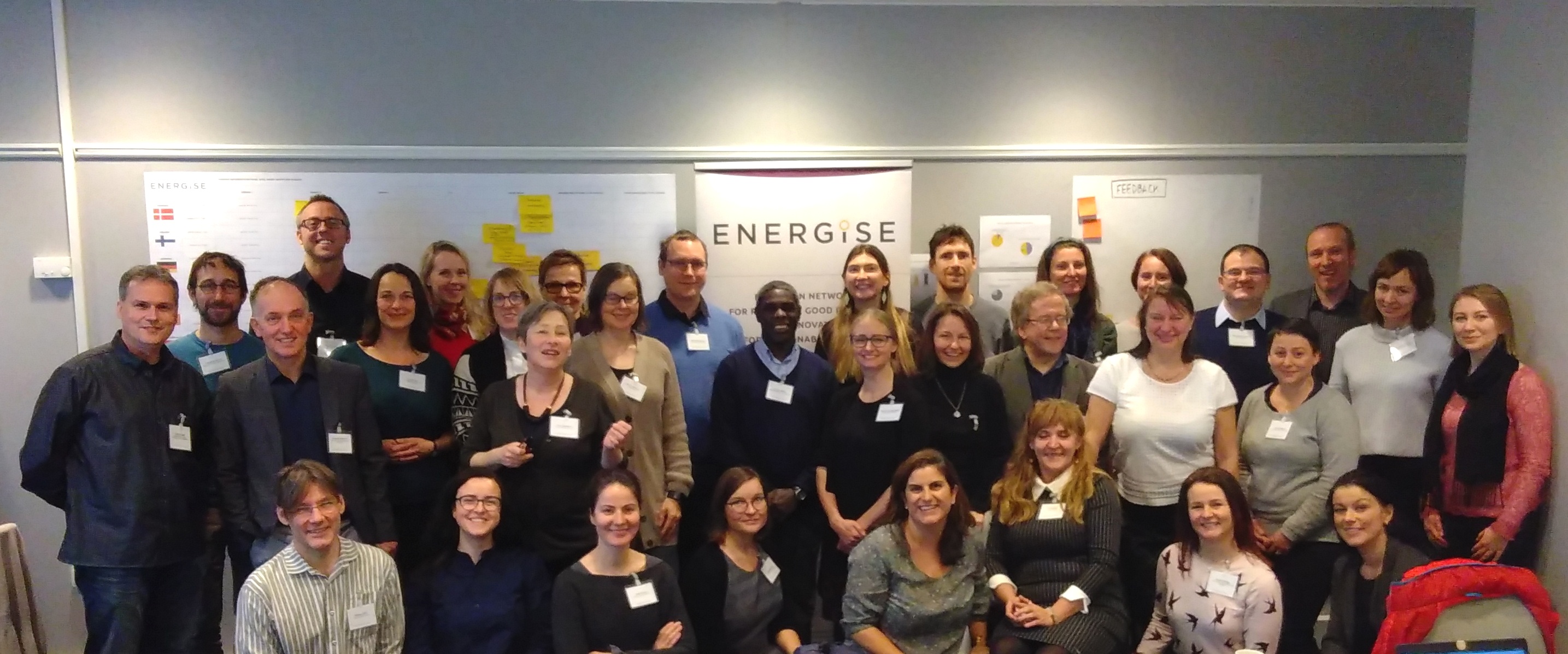
Opportunities for households to change their energy use vary significantly across Europe as well as within European countries. There is individual variation in performing daily practices (and thus in energy use), but at the same time practices are socially reproduced and guided by material and institutional conditions as well as understandings and assumptions of normality and acceptability in a given context, and the conditions surrounding European households are highly variable. Considering the prospects for cross-cultural interventions, it is important to understand how intervention effectiveness depends on context (such as the local practice cultures). Change initiatives should also target several aspects of household energy use and several dimensions of practice cultures, thus allowing better understanding of the interconnections between practices.
Throughout this year (2017), ENERGISE Work Package 3 has been leading the design of ENERGISE Living Labs (ELLs). We have been conducting reviews on existing research on energy use across Europe, on European energy change initiatives and their success factors, and on practice-based approaches to change initiatives and living laboratories. The material used in identification of ELL designs also includes two assignments to each consortium partner, focusing on the potential sites, target groups, stakeholders and local partners, among other issues. Partners have also been asked to identify and describe hard-to-reach and prioritised groups for their country, in order to ensure that selected change initiatives would be examined in the broadest possible set of household circumstances.
In addition to written assignments, ENERGISE partners’ thoughts about the initial designs and potential target groups and sites have been discussed in monthly meetings and separate calls. The first workshop supporting the ELL design was hosted by the National University of Ireland, Galway (NUIG) in Dublin, in June 2017. In this workshop, we focused on the various ways to engage and support households in change initiatives and why would, or would not, these initiatives work in different contexts or for particular groups. The initial design of ELLs has been developed in close collaboration with WP4 that comprises the preparation, roll-out and monitoring of ELLs, and with WP5 leading the cross-national analysis and comparison of ELLs, as well as the other consortium partners who will be implementing the ELLs in their countries next year.

The ENERGISE team & Expert Panel members at the Helsinki workshop in December 2017
The starting point for the design of ELLs is the understanding of energy use as a material expression of people’s performance of everyday practices and associated social norms and cultural conventions. ELLs are targeted initiatives to transform energy use in households and communities that address contextual influences on household practices. The basic design of ELLs consists of five phases: first, the context within which the energy-related practices are performed is mapped. Second, we assess the baseline of energy use as well as the practices related to energy use together with participating households. We also set a target for practice change. Third, the changes in particular practices are co-designed, bearing in mind the ways daily practices are interconnected. Fourth, the context (in)dependent measures are utilised to support the actual change in practices within households. These measures could include needs-based, tailored support for the households in order for them to adjust the changes in their everyday lives, or challenging oneself by setting some personal goals. The final phase of the ELLs focuses on evaluation of the outcomes.
Each country will be conducting two living labs (as seen on the figure above). The community elements in ELL2 (promoting community-driven efforts) are added to these basic elements included in ELL1 (targeting individual households), to scrutinize the role of elements such as peer-to-peer learning and support in living labs. Altogether 16 ELLs engaging 320 households and a large number of stakeholders will be thus implemented next year (in 2018).
The next steps in the ELL design process include a two-day meeting with partners in which we elaborate on the design as well as concrete implementation and monitoring plans with the lead of WP4. The meeting is followed by one-day workshop with ENERGISE Expert Panel members and other experts that will be hosted by the University of Helsinki (UH), in Helsinki, Finland. The aim of the workshop is to get feedback on the design and to "pre-test" the living labs with the help of draft manuals and guidebooks. After this, we are ready to refine our ELL design and start the actual implementation!
Senja Laakso and Eva Heiskanen, University of Helsinki